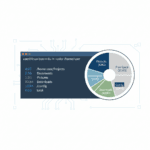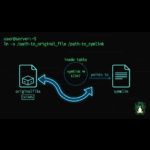I spent three years tracking every single dollar I spent in a complicated spreadsheet with 47 different categories. Coffee? Category. Gas station snacks? Different category. That random Amazon purchase at 2 AM? You better believe I had a category for that too.
You know what happened? I burned out after about six weeks, abandoned my budget completely, and spent the next year wondering where all my money went. The problem wasn’t that I lacked discipline. The problem was that I made budgeting way more complicated than it needed to be.
Then I discovered the 50/30/20 budget rule, and everything changed. This dead-simple framework helped me save my first $10,000, pay off my credit cards, and actually stick to a budget for more than two months. Here’s what I learned about making it work in the real world.
What is the 50/30/20 Budget Rule?
The 50/30/20 rule is a budgeting framework that divides your after-tax income into three categories: 50% for needs, 30% for wants, and 20% for savings and debt repayment. That’s it. No tracking every latte, no guilt about spending money on things you enjoy, no spreadsheet with more rows than your tax return.
This approach was popularized by Senator Elizabeth Warren in her book “All Your Worth: The Ultimate Lifetime Money Plan.” The beauty of this method is its simplicity. Instead of micromanaging 47 spending categories, you’re managing three big buckets.

Here’s how it breaks down:
- 50% for Needs: Essential expenses you can’t avoid like rent, utilities, groceries, insurance, minimum debt payments, and transportation.
- 30% for Wants: Everything else that makes life enjoyable but isn’t strictly necessary. Think dining out, entertainment, hobbies, subscriptions, and that new gadget you’ve been eyeing.
- 20% for Savings and Debt: Building your financial future through emergency funds, retirement contributions, extra debt payments, and investments.
How the 50/30/20 Rule Works in Real Life
Let me show you what this looks like with actual numbers. Say you bring home $4,000 per month after taxes. Your budget would break down like this:
- Needs ($2,000): $1,100 rent, $200 utilities and phone, $300 groceries, $150 car insurance and gas, $100 minimum credit card payment, $150 health insurance
- Wants ($1,200): $300 dining out, $150 streaming services and subscriptions, $200 entertainment and hobbies, $250 shopping and personal care, $300 miscellaneous fun money
- Savings ($800): $300 emergency fund, $400 retirement account, $100 extra debt payment beyond minimums
If you’re earning $6,000 per month after taxes, the same principle applies at a different scale. Your needs would be $3,000, wants $1,800, and savings $1,200. The percentages stay consistent regardless of your income level.
The key is working with your take-home pay, not your gross salary. If you make $60,000 annually but only bring home $3,500 per month after taxes and deductions, you budget based on that $3,500 figure.
The Difference Between Needs and Wants
This is where most people get stuck, and honestly, it’s where I struggled at first. The line between needs and wants gets blurry fast. Is internet a need or a want? What about your gym membership? That daily coffee run?
Here’s the simple test I use: Would something catastrophic happen if you stopped paying for this tomorrow? If you skip your rent, you lose your apartment. That’s a need. If you cancel Netflix, you’ll be bored on Friday night. That’s a want.
Some tricky examples I’ve encountered:
Internet: If you work from home, it’s a need. If you’re using it solely for entertainment, it’s technically a want (though most people treat it as a need in 2025).
Groceries vs. Dining Out: Basic groceries for home-cooked meals are needs. The fancy organic stuff that costs twice as much? That extra cost slides into wants. Restaurant meals and takeout are always wants.
Transportation: Your car payment and insurance are needs if you require a car for work. That upgraded trim level with leather seats? The cost difference is a want.
Clothing: Basic work-appropriate clothes are needs. The designer jeans and that fourth pair of running shoes are wants.
Don’t stress about perfect categorization. If something feels like it could go either way, just pick a bucket and stay consistent. The 50/30/20 framework is forgiving enough that being off by $50 here or there won’t derail your financial life.
When the 50/30/20 Rule Doesn’t Work
Let me be straight with you: this rule isn’t magic, and it won’t work perfectly for everyone. I learned this the hard way when I first moved to a high cost of living city and watched my rent alone eat up 45% of my take-home pay.
The 50/30/20 rule struggles in these situations:
High cost of living areas: If you’re in San Francisco, New York, or other expensive cities, keeping housing under 50% of your total needs budget can feel impossible. When your studio apartment costs $2,500 and you’re only bringing home $4,500, the math just doesn’t work.
Low income situations: When you’re barely covering essentials, allocating 30% to wants isn’t realistic. If you’re making $2,000 per month and rent is $900, you might need to shift to a 70/15/15 or even 80/10/10 split just to survive.
High debt loads: Student loans, credit card debt, and other obligations can push your needs category way past 50%. That minimum payment on $80,000 in student loans isn’t negotiable, even if it breaks your budget.
Variable income: Freelancers, commission-based workers, and seasonal employees often struggle with percentage-based budgets. When your income swings from $3,000 one month to $7,000 the next, the 50/30/20 framework requires constant recalculation.
When the standard rule doesn’t fit, you can modify the percentages. Some alternatives that work better for specific situations:
- 70/20/10: Better for high cost of living areas where needs genuinely require more of your income
- 60/30/10: Accommodates higher essential expenses while keeping some savings discipline
- 40/30/30: Aggressive savings approach for people trying to reach financial independence faster
The framework is a starting point, not a rigid rule. Adjust it to fit your reality rather than forcing your reality to fit arbitrary percentages.
How to Actually Implement the 50/30/20 Budget
Knowing the theory is useless if you can’t make it work in practice. Here’s exactly how I implemented this budget when I finally got serious about my finances.
Step 1: Calculate your after-tax monthly income. Add up all sources of income after taxes and deductions. If your income varies, use an average of the last three to six months. For me, this was straightforward since I have a regular paycheck, but when I was freelancing, I had to get creative with estimates.
Step 2: Review your last three months of spending. Pull your bank and credit card statements. Categorize every transaction into needs, wants, or savings. This step sucks. It’s tedious and you’ll probably discover some uncomfortable truths about your spending habits. Do it anyway.
Step 3: Calculate your current percentages. Add up each category and divide by your monthly income. When I first did this, I was spending 65% on needs, 32% on wants, and saving 3%. No wonder I was always broke.
Step 4: Identify what needs to change. Compare your current percentages to the 50/30/20 target. Where are you overspending? What can you cut or reduce? For me, I realized I was treating way too many things as “needs” that were actually wants.
Step 5: Set up automatic transfers. The most powerful move I made was automating my savings. On payday, 20% of my paycheck automatically moves to a separate savings account before I can spend it. This eliminates willpower from the equation. You can’t spend money you never see.
Step 6: Use separate accounts for each bucket. I maintain three checking accounts: one for needs, one for wants, one for bills. When my paycheck hits, the money automatically splits between these accounts based on my 50/30/20 targets. This physical separation makes it impossible to accidentally overspend in one category.
Step 7: Review and adjust monthly. Set a calendar reminder for the last day of each month. Spend 15 minutes reviewing where you ended up versus where you planned to be. Adjust next month’s allocations based on what you learned.
Common 50/30/20 Budget Mistakes That Cost Me Money
I made every mistake in the book when I first started using this framework. Learn from my expensive lessons:
Treating irregular expenses as emergencies: Car registration, annual insurance premiums, holiday gifts, and birthday presents are not emergencies. They happen every single year. I used to blow my budget every December because I “forgot” about Christmas. Now I calculate my annual irregular expenses, divide by 12, and set that money aside monthly in my needs category.
Forgetting about sinking funds: Your car will eventually need new tires. Your laptop will die. Your roof will leak. These aren’t surprises, they’re inevitabilities. I now keep separate sinking funds inside my 20% savings bucket for predictable future expenses. When my car needed $800 in repairs, it didn’t destroy my budget because I’d been setting aside $50 monthly for vehicle maintenance.
Being too rigid about the categories: Some months you’ll spend 55% on needs because you had to replace your water heater. That’s fine. The goal is to average 50/30/20 over time, not hit it perfectly every single month. I stressed myself out trying to achieve perfection when I should have been aiming for directional accuracy.
Ignoring the psychological aspect: Money is emotional. If you cut your wants budget so aggressively that you feel deprived and miserable, you’ll eventually rebel and blow everything on a spending spree. I learned to keep enough in my wants category to enjoy life while still meeting my savings goals. Building financial stability shouldn’t require living like a monk.
Not adjusting for life changes: Your budget should evolve as your life changes. When I got a raise, I immediately inflated my wants category instead of increasing my savings rate. When my rent increased, I didn’t adjust my percentages to compensate. Every major life change requires a budget review.
How the 50/30/20 Rule Fits Into Your Overall Financial Strategy
The 50/30/20 budget isn’t a complete financial plan. It’s one tool in a larger toolkit. Here’s how it connects to the other pieces of your financial life.
That 20% savings bucket should be working toward specific goals in a specific order. First, build a starter emergency fund of $1,000. This covers small emergencies without derailing your entire budget. Then shift focus to paying off high-interest debt, anything above 10% interest rate. Credit cards, payday loans, and similar debt traps should be eliminated before you worry about aggressive investing.
Once you’ve knocked out the high-interest debt, build your full emergency fund to cover three to six months of expenses. This is your financial safety net that prevents one bad month from destroying years of progress.
With your emergency fund in place, your 20% savings can shift toward building actual wealth. This is where compound interest starts doing the heavy lifting. Every dollar you invest in your twenties has decades to grow. That $400 monthly retirement contribution doesn’t sound impressive until you realize it could become $500,000 by the time you’re 65.
The 50/30/20 framework also pairs beautifully with systematic investing strategies. Dollar cost averaging works because you’re consistently investing that 20% regardless of market conditions. You’re buying when markets are high, buying when they’re low, and avoiding the emotional trap of trying to time your investments.
For people interested in generating passive income, that 20% bucket is your seed money. Whether you’re building a dividend portfolio or making other investments, you need capital to start. The budget creates the discipline to consistently generate that capital.
Tools and Apps That Make the 50/30/20 Rule Easier
You don’t need fancy software to implement this budget, but the right tools can eliminate a lot of friction. Here’s what actually helped me stick to the plan:
YNAB (You Need A Budget): The best budgeting app I’ve used, though it requires a monthly subscription. The envelope-based system naturally aligns with the 50/30/20 framework, and it forced me to give every dollar a job before I spent it.
Mint: Free and solid for tracking spending automatically. It categorizes transactions for you and shows you where your money is actually going. The reality check can be brutal but necessary.
Personal Capital: Better for the investment side of your 20% savings bucket. Great at showing your net worth trend over time, which becomes addictive when you watch it climb month after month.
Simple bank accounts with automatic splitting: Several online banks now offer automatic percentage-based splits when your paycheck arrives. Set it once and forget about it. The less manual work required, the more likely you’ll stick with it.
Spreadsheets: If you’re a spreadsheet person like me, a simple three-column budget template works perfectly. Track your planned 50/30/20 allocations versus actual spending. I review mine for 10 minutes every Sunday morning with my coffee.
The tool matters less than the consistency. Pick something you’ll actually use every month rather than the “perfect” solution you’ll abandon after three weeks.
Beyond the Basics: Optimizing Your 50/30/20 Budget
Once you’ve mastered the fundamentals, there are some advanced moves that can supercharge your results. These aren’t necessary for everyone, but they’re worth considering as your financial situation improves.
Lifestyle inflation defense: Every time you get a raise, immediately increase your savings percentage before your spending can expand to fill the gap. When I got a 10% raise last year, I moved 7% straight into savings and let myself enjoy only 3% as increased lifestyle spending. This approach lets you enjoy some fruits of your labor without sabotaging your long-term goals.
The wants optimization: Not all wants are created equal. That $15 monthly streaming subscription might bring you 20 hours of entertainment. That $80 bar tab brought you three hours of moderate fun and a headache. Track which wants actually improve your life and ruthlessly cut the ones that don’t. I cut my wants spending by 20% without feeling any less happy by eliminating things I didn’t actually enjoy.
Needs category audit: Every six months, review every expense in your needs category and ask if you can reduce it without sacrificing quality of life. Can you refinance that car loan? Switch to a cheaper cell phone plan? Shop your insurance rates? I found $200 monthly in savings just by making three phone calls and switching providers.
Seasonal adjustments: Your budget doesn’t have to be identical every month. Maybe you shift to 55/25/20 in December to account for holiday spending, then compensate with 45/30/25 in January and February. The annual average matters more than any individual month.
What Happens After You Master the 50/30/20 Rule
The ultimate goal of the 50/30/20 budget is to make budgeting so automatic that you stop thinking about it. After about 18 months of consistent use, I reached a point where I barely needed to track anything anymore. My spending had stabilized into predictable patterns that naturally fell within my targets.
At that point, you can graduate to more sophisticated financial strategies. Maybe you start analyzing investment opportunities with that growing savings pile. Perhaps you begin exploring ways to increase your income rather than just managing the income you have. Or you might shift focus to understanding the difference between trading and investing as your wealth grows.
The 50/30/20 framework isn’t the end of your financial journey. It’s the foundation that makes everything else possible. You can’t invest successfully if you’re living paycheck to paycheck. You can’t take calculated risks if one unexpected expense destroys your budget. You can’t build wealth if you don’t have consistent savings to invest.
This simple three-category budget creates the financial stability and discipline that opens doors to bigger opportunities. It’s not sexy, it’s not complicated, and it won’t make you rich overnight. But it works, and that’s more than I can say for the 47-category spreadsheet nightmare I started with.
Start simple, stay consistent, and adjust as you learn what works for your specific situation. The best budget is the one you’ll actually follow for years, not the “perfect” system you abandon after two months.







